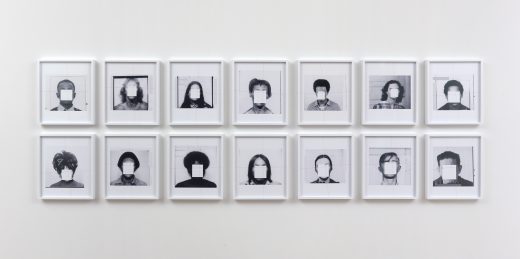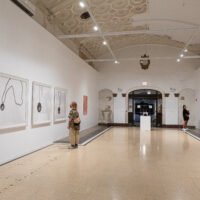Trevor Paglen

In December 2018 artist Trevor Paglen launched a small satellite into space with the aim of deploying a diamond-shaped balloon that would orbit the earth. The highly reflective inflatable sculpture would appear in the night sky to the human eye as a bright artificial star. The artwork was never deployed. What constituted the first artwork in space for art-in-space’s sake was riddled with the mundane trappings of many American ventures into the great unknown: an inability to distinguish between a fleet of identical satellites and a government shutdown.
Paglen’s research-driven practice reveals much more than the perils of bureaucracy. Despite the apparent failure to fully launch his first space-art endeavor, Orbital Reflector nevertheless well describes his enduring insights around the power of a simple change in perspective.
Drawing upon formal study of geography in graduate school, Paglen is well versed in looking at the natural world. Photography remains a primary tool for Paglen to decipher and unearth relationships between technology and the environment. Working in a popular tradition of landscape portraiture, Paglen’s photographs often illuminate the barely visible unnatural networks and systems that exist just beneath the surface: behind a mountain is a military base, below the seabed is a fiber-optic cable, and between a star and the edge of a cloud is a classified satellite.
Beyond the camera lens, Paglen examines spectatorship more broadly with a critical eye towards the apparatuses of the surveillance state and debates around privacy and access in the digital age. He probes at the question of who gets to see what as much as he prods the problems around who is watching us. Paglen’s latest work makes use of recent advancements in artificial intelligence. Playing with training sets, he has taught computers to both recognize images and also create images in return. The results, trained from unorthodox taxonomies such as symbols of psychoanalysis, produced unnerving blurred images that could deck the spines of neo-gothic dystopian fiction. In seeing the world through a machine’s eye, we might see things we dislike—Paglen’s art suggests this might be a symptom of human behavior and bias.
One might misinterpret Paglen’s artistic escapades as escapism: his explorations of outer space coupled with an engagement with advanced technology could evince a desire to escape this world in search of a better one. Amid an atmosphere of political turmoil, economic collapse, and environmental catastrophe, what of humanity is left that is worth saving? Far from offering an escape, Paglen’s practice seeks to firmly ground us in reality. His artwork helps us better understand our actions and ourselves in service of making good with the world we already inhabit.
